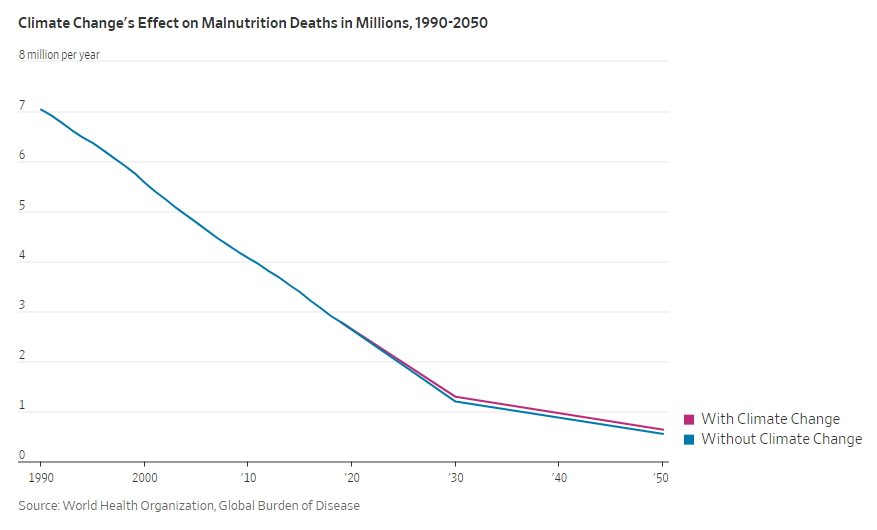(p. A15) Amid the ice floes of the Arctic, tiny seabirds called dovekies feed in the plankton-rich waters, a survival strategy that worked well until the pack ice began to dwindle around the islands in Russia’s Franz Josef Land, where the dovekies breed. Like their Arctic neighbors the polar bears, often seen stranded on shrinking icebergs, it appeared that the dovekies faced an existential threat because of climate change. Scientists working in the region predicted that they would have to fly an hour or more to find food.
Instead, data from radio-tagged birds have revealed something entirely different: Faced with the prospect of extinction, the dovekies adapted. They were able to pivot to a new foraging opportunity a five-minute flight away, where water from melting glaciers slams into ocean currents just offshore, making plankton there easy pickings. For now, the dovekie population is thriving, producing just as many healthy chicks as before. Unfortunately, this tactic is not a permanent solution, as Arctic glaciers are dwindling too. But it could buy the birds another century to try to adjust their survival strategy again.
The Franz Josef dovekies remind us that nature is not a passive bystander to climate change. In some surprising cases, new conditions can trigger new behaviors.
. . .
When a group of biologists recently fanned out across the eastern Pacific to study aggression in butterfly fish, they expected to witness the constant territorial skirmishes for which these feisty coral reef dwellers are famous. Then a marine heat wave caused the corals to expel their algae, a damaging process called bleaching that leaves once-colorful reefs ghostly pale and lacking in nutrients for fish.
Suddenly without meals worth fighting for, the butterfly fish changed too. They transformed from aggressors into pacifists almost overnight, becoming docile to save energy and eke out an existence, albeit a subdued one, in a calorie-starved environment. If the corals ever recover, then the fish may regain their previous territorial vigor. If not, then they’ll no longer be famous for defending their food; they’ll be too busy trying to find enough of it.
Butterfly fish and dovekies both employ what biologists call “plasticity,” a natural ability to be flexible.
. . .
Warmer temperatures are forcing conifers to shift northward, while many hardwoods are moving north and west, chasing increases in rainfall. But the direction of these shifts isn’t nearly as surprising as their speed. Red oaks like those at Walden Pond are lumbering north by more than 10 miles every decade, which is nothing next to the 40-mile pace set by honey locusts. Both are shifting considerably faster than the range of the average bird: . . .
. . .
When back-to-back hurricanes Irma and Maria battered the Turks and Caicos Islands in 2017, they flattened buildings, uprooted trees and left the community reeling. They also created a rare scientific opportunity. Surveys of a local species of anole—a distant cousin of iguanas—had just been completed prior to the storms. The researchers had intended to show the effects of predation on the lizards by non-native rats. Instead, they turned their attention to the impact of the hurricanes and immediately repeated their field work. What they found was survival of the fittest in action: Lizards in the post-storm population all had larger toe pads and stronger front legs better suited to gripping trees in high winds. And those traits were being passed on to the next generation.
While scientists expected to eventually see evolution in reaction to extreme weather, many were stunned that it could happen so fast. Understanding how some species adapt in various ways, while others can’t, may help to inform our own responses to climate change. Plasticity may become an unavoidable priority in preparing for a warmer world.
For the full commentary, see:
Thor Hanson. “Some Species Are Changing Along With the Climate.” The Wall Street Journal (Saturday, Sept. 25, 2021): A15.
(Note: ellipses added.)
(Note: the online version of the commentary has the date September 24, 2021, and has the same title as the print version.)
The commentary quoted above is adapted from Hanson’s book:
Hanson, Thor. Hurricane Lizards and Plastic Squid: The Fraught and Fascinating Biology of Climate Change. New York: Basic Books, 2021.


